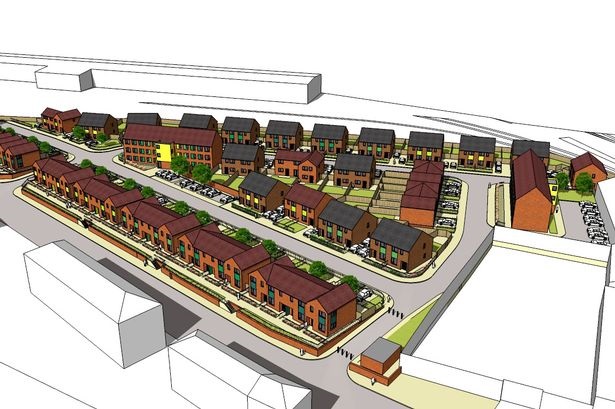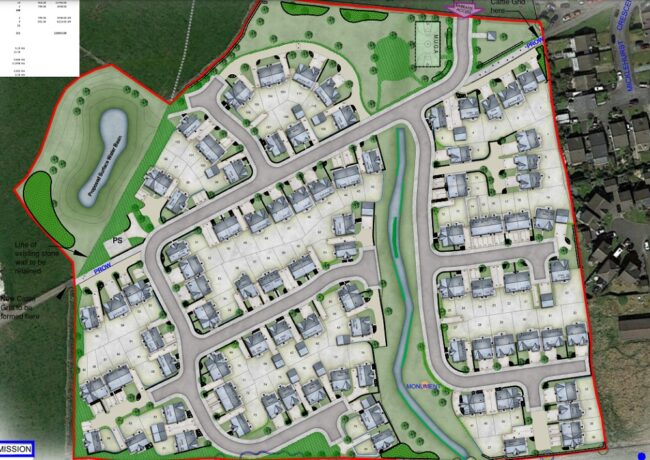AS2015: Osborne targets 400,000 homes to buy
Chancellor of the Exchequer George Osborne outlined a five-point plan to deliver £20bn of investment into housing as part of the Spending Review and Autumn Statement, alongside a raft of changes to speed up the planning system.
Osborne set a target of 400,000 affordable homes to be on site by 2020-21, focussed on the low-cost home ownership market rather than for rent. Half would be starter homes sold at a 20% discount to first-time buyers younger than 40 years old, with a £2.3bn fund to support the construction of up to 60,000 of these.
The pipeline also included 135,000 homes for Help to Buy, 10,000 homes that will allow a tenant to save for a deposit while they rent, and 8,000 specialist homes for the disabled.
As part of the delivery strategy for these homes, Osborne removed constraints that prevent private sector organisations from participating in the delivery of these programmes, including restrictions on bidding for government funding.
He also promised £2.3bn in loans to help regenerate large council estates, and the release of public sector land to deliver 160,000 homes.
Osborne also extended the Help to Buy equity loan scheme to 2021, and announced Right to Buy pilot schemes with five housing associations, including Liverpool-based Riverside.
In line with his strategy to prioritise affordable home ownership over the rented sector, the Chancellor said that from 1 April 2016 people buying buy-to-let properties and second homes would see a 3% increase in Stamp Duty Land Tax.
The Chancellor outlined further reforms to the planning system to accelerate the delivery of these homes, which included:
- a delivery test on local authorities to ensure that they are bringing forward the number of homes set out in local plans
- ensuring that local communities can allocate land for housing through neighbourhood plans, even if that land is not allocated in the local plan
- backing SME housebuilders by amending planning policy to support small sites, extending the £1bn Builders’ Finance Fund to 2020-21, and halving the length of the planning guarantee for minor developments
- changes to Section 106 agreements, to bring forward a more standardised approach to viability assessments and extend the ability to appeal against unviable section 106 agreements to 2018
- Release unused and previously undeveloped commercial, retail and industrial land for starter homes, and support regeneration of previously developed, brownfield sites in the greenbelt, allowing them to be developed in the same way as brownfield sites elsewhere, as long as they are used for starter homes
Industry reacts
Melanie Leech, chief executive of the British Property Federation, said: “While there are some really sensible suggestions in today’s announcement, the planning system still has one big problem – the lack of resources in local authority planning departments. Both the private and public sector have identified this as one of the biggest obstacles for development, and with the private sector willing to discuss how it might be able to plug the funding gap, it is frustrating that Government has not engaged on this matter.
“The lack of resources afflicting local authority planning departments is an issue, and if authorities can keep their local plans kept short and sharp, they will help themselves.”
Jon Suckley, partner at HOW Planning, said: “The Autumn Statement was sprinkled with initiatives to improve home ownership and housing delivery.
“The Chancellor has made a commitment to build 400,000 new affordable homes of which 50% are to be starter homes. This commitment provides further strength to the proposals contained in the Housing & Planning Bill published in October of this year which outlines that the Government intends to create a legal obligation on Councils to provide 200,000 new starter homes. The introduction of starter homes is now gaining real political traction.”
Henry Brooks, managing director of Tatton Estate Management, said: “It is good to see provision of new space for homes and jobs being recognised a key requirement for economic sustainability. This acute housing crisis cannot be addressed by government policy alone, for example, how can councils and neighbourhood plan committees be resourced to take the lead in proactively bringing forward good quality development? The detail of the new delivery test on local authorities to ensure supply against the number of homes set out in Local Plans may go some of the way to helping with this.
“In addition, private rental is part of the solution, not the problem. Attacking and taxing the private rental sector is the wrong signal when also trying to get the market to deliver more homes, of every type.”
Kevin Whitmore, director at political consultants Lexington Communications, said: “George Osborne claimed three times that ‘we are the builders’ as he continued the Conservative Party’s crusade to build 1m more homes during this Parliament. The promise of further planning reforms and extra money are all well and good but if local councils fail to match the Government’s ambition I can’t see them making a real difference. He should now use his influence to encourage a change in attitude within local government so that housebuilding is recognised as being crucial to local economic growth and not something to be grudgingly supported.”





Local authorities do not build homes, house builders do. How about measures to deal with the failure of house builders and strategic land companies to build out their consents? Compulsory purchase legislation should be beefed up considerably.
The government should listen less to political lobbyists, funded by house builders and slash the myriad corporate welfare subsidies for those house builders, putting the money instead in the hands of local authorities to buy and develop land. Motivated by public good rather than private profit you will see house building increase much quicker than persisting with the current failed approach.
By Corporate welfare watch
“a delivery test on local authorities to ensure that they are bringing forward the number of homes set out in local plans”
I do not understand this. How on earth will this work?
By Corporate welfare watch
Absolutely agree it is the house builders who sit on their hands not building and indeed why should they, profits are made by restricting supply raising prices and profits. But then again they are controlled by the banks and the wider economic situation. I think many public sector workers must be worrying whether they would ever get a mortgage given job uncertainties.
Fundamentally starter homes with 20% discount and low cost ownership are not actually affordable houses and how are these funded…oh yes selling off affordable social rented housing. And let’s not forget there are no details of how any of these initiatives actually work as yet, the Infrastructure Bill is so vague as to be laughable. As ever form over substance and blame planning! You can allocate sites and grant permissions till the cows come home but delivery is out of a council’s hands. The only solution to getting houses up is social house building but that does not make profit.
By Cynical LA planner